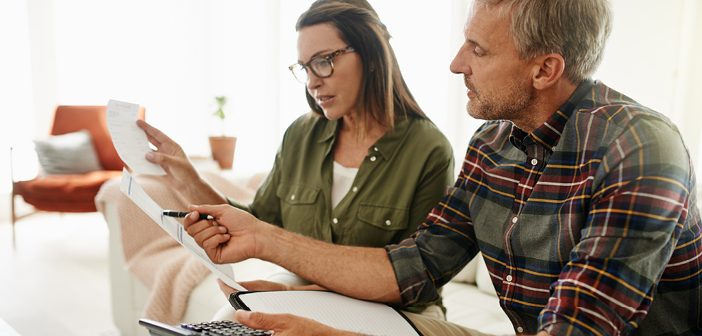As the economic challenges of COVID continue, we look at paying down credit card debt. Even as the financial landscape changes around us, there are still ways to minimize or prioritize debt. In many ways, reducing debt during times of uncertainty, or at least making a commitment to not incur more, is vital for financial stability and fitness.
There are many benefits to focusing on paying down debt. Paying off consumer debt protects your financial stability. Keeping credit card debt around 10%-20% of your available credit helps maintain a good credit score. And a good credit score can help you make big purchases or secure loans when you need them.
It also encourages long-term responsible spending habits. Plus, less debt means less money spent on interest charges, extra funds for other necessities, money to put into savings or to use on discretional spending. Below are a few simple ways to lower your credit card debt this August (and for the rest of the year).
Ways To Pay Off Credit Card Debt
Timely Payments
The first place to start when looking to pay off credit card debt is to examine your credit card bills so you know exactly how much you owe, what your minimum payment is each month, due date, and the approximate amount of interest charged to you each month.
Paying off credit card debt requires that you aren’t adding to that debt. Make sure you are making your payments on time and in full when possible. Keep in mind, if you are only making minimum payments, your unpaid interest charges will accrue and thus increase your balance. Carefully examine your bills to make sure your payments not only cover the minimum amount due, but the interest that is added to the bill each month. This attention to detail will help your balance drop faster all around.
Negotiating Payment Plans Or Rates
The next place to look for lowering your credit card debt is your own credit card company. By contacting your creditor directly, they may be able to assist you in either setting up a manageable payment plan or lower your interest rate.
A lower interest rate or monthly payment would allow you to then take any money saved to put directly back into the monthly payment so that you are paying extra each month. Many factors can influence a financial institution’s willingness to agree to these types of changes including, credit score, length of relationship with the institution, and financial hardship.
0% APR Offers
Another way to pay off credit card debt is to open another credit card account, under the right circumstances. While this may seem counter-intuitive, a wise selection on a new credit card may be an easy way to lower your debt. If you are able to find a credit card with a 0% APR offer for 6 months or more, you can use that new card to pay off a higher interest rate card. You then have a 6-month buffer to pay off the new card in full without interest charges.
If you choose this route, be careful to not put more debt back onto your old card and that you stay on track to pay off the new card in full by the end of the introductory period. If you don’t think you can fully pay off the new card by end of the period, this still may be worth the benefit, so long as the APR after the introductory period is not higher than the original card.
One great option to consider is your Credit Union’s new Crystal Visa® cash back credit card. This comes with an introductory 0% APR for six months on new purchases to help you manage debt easier. It also gives you unlimited 3% cash back on all purchases for 12 months to help put more money in your pocket. Learn more at figfcu.org/crystal-visa.
Consolidation
Along the same lines, some consumers choose to consolidate their credit card debt through personal loans. These loans vary in requirements, including whether or not they are secured through personal assets. The benefits to consolidation include combining multiple debts into one streamlined bill and lowering the amount you pay each month.
Consolidation loans should only be considered if the interest rate is lower than your current card and won’t significantly increase the amount of time it will take you to pay off the loan. Any money saved with your new lower payment should be added as an extra payment to your loan to pay it off faster. Make sure to check there are no prepayment penalties.
Snowball Method
Finally, many people with multiple lines of consumer debt follow the Snowball Method to pay down debt. The Snowball Method is a fairly straight forward (and effective) way of paying off debt. Essentially, you choose one credit card or other debt to pay down first and begin making a higher monthly payment until that debt is paid off. During this time, only minimum payments are made on the other balances. Once the first card is paid off, you then transfer the amount paid on that bill as an extra payment on the next card or bill. As you pay off more debt, the larger your extra amount (or snowball) grows, allowing you to pay off debt faster as you go along.
The Challenge
Now that you have different options for paying off credit card debt, here is your challenge:
- Explore at least one of the options above for paying off your credit card debt and start the process.
- Examine your budget and identify an extra amount that you can add to one of your credit card bills each month and commit to paying that amount for the rest of the year.
Bonus Tip: Make your extra payment automatic so it is set for the rest of the year or longer.
Keeping Debt Under Control
After all this work paying down your balances, make sure not to overspend on your cards in the future. Your Credit Union has a free, easy-to-follow Budgeting Tool for guidance on how to budget like a pro.
This article was developed in partnership with Balance Pro.





